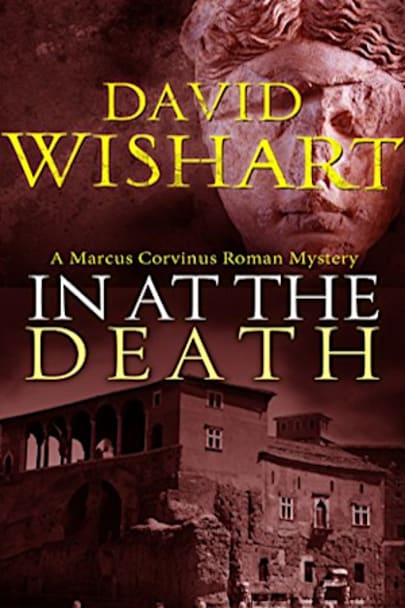Seemingly, when he committed suicide by falling from a tenement window, young Sextus Papinus had everything to live for. So did he jump after all, or was he pushed? And if the second, whodunnit, and why? Corvinus finds his investigations hampered by a spot of compulsory dog-minding, and the fact that the dog in question is a hound from Hell with a zero score in the social graces doesn’t help … matters at all…
The eleventh book in the Marcus Corvinus series.
more



In at the Death introduces something new for Corvinus: for the first time he is hired to investigate, and what’s more it’s a suicide rather than a murder.
*** What to expect
Corvinus is independently wealthy, and is usually dragged into resolving murders because he somehow got involved when they happened. This time he’s asked – hired – to look into the apparent suicide of a young man. Naturally things grow complex as the plot unfolds, and pretty soon – not surprisingly – the suicide is questioned as a possible murder (it’s in the blurb, so hardly a spoiler).
As Corvinus tries to untangle why a young man at the very start of his political career might be murdered, or commit suicide for that matter, and follows the young man’s life and friends matters seem to constantly escalate until they reach the highest levels of Roman society in the last months of Tiberius’ reign. It’s another one of those novels that is sparked from an historical anecdote, which Wishart explains in a perfect “it could have been this way” prerogative of the historical-fiction author.
This is book 11 of the series, and is related to the “political” books (rather than the “plain” mysteries). There is some continuity from books one (Ovid) to three (Sejanus), so while it’s OK to skip around as most of the series is not overly tied this novel will make more sense if read only after the first 3.
*** What I liked
As usual, Wishart breathes life into Roman life, with engaging characters and complex plots. His research and anecdotes are always top notch, the writing style fluent and immersive. Corvinus has a most unique voice that is a joy to read (though see note below).
In all this series, Wishart uses a modern language to bring the characters to life. He’s also using a time-honoured trope of representing the Roman patriarchy similar to British aristocracy. The result is a novel that reads as a cross between Sam Spade and Downton Abbey, on a backdrop of ancient Rome. It makes for very enjoyable experience for lovers of those genres – we’re not reading in Latin, after all, so taking a purist view is in itself a untenable proposition.
*** What to be aware of
Though Wishart’s prose is excellent, he avoids all Latin terms to the point where it’s a bit much (like referring to a toga as a mantle, or to the Forum as Market Square). I find this a bit diluting the experience of Rome, which is a big factor to anyone reading Roman-era fiction.
*** Summary
This is another great volume in the series, but note you should at least read the first 3 books before this one. If you like cosy mysteries and Roman-era detectives (e.g. by the likes of Lindsey Davis, Steven Saylor, and Ruth Downie), you really need to read the Corvinus series as well. This is as good a starting point as any.
—
Assaph Mehr, author of Murder In Absentia: A story of Togas, Daggers, and Magic – for lovers of Ancient Rome, Murder Mysteries, and Urban Fantasy.